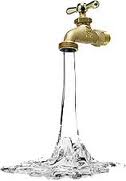The pillars on which rests a good care of the elderly are mainly based
on interdisciplinary work which should be good coordination between specialized
care, health centers, social workers and specialized geriatric care. The
correct use of appropriate levels of care and expertise guarantee optimal care
for elderly.
 Today, we have different levels of care which aims to ensure optimal
care to the elderly population. At different levels of care is important
comprehensive geriatric assessment on an individual basis depending on the
characteristics of each patient and a correct coordination of all disciplines. Levels
of Care and Attention are:
Today, we have different levels of care which aims to ensure optimal
care to the elderly population. At different levels of care is important
comprehensive geriatric assessment on an individual basis depending on the
characteristics of each patient and a correct coordination of all disciplines. Levels
of Care and Attention are:
Primary care, which deals with the development
of prevention and health promotion, curative or rehabilitation. The nurse
should work with other professionals involved as social workers, psychologists
or therapists.
From my point of view, the work of the nurse is very important in order
to perform a comprehensive health education patient and family. Education is
very important to explain health-oriented activities such as adequate food,
adequate physical exercise, control toxic habits, self-medication, body wash or
accident prevention. These activities should be developed in consultation and
in home when the patient is not able to access the center. Here is a very
important object that is the frail elderly or high risk to develop programs or
systematic actions. I also wanted to emphasize that the primary care, is the
level of care to the greatest number of elderly can be accessed regardless of
the physical, mental and social in which you are.
The general hospital, it is
concerned the elderly patient that there is not a geriatric patient and
requires input from an ailment. The activities of nursing home hospitalization
includes health education, hygiene and mobilization, chest physiotherapy,
oxygen, making constant and samples, care, etc. The objective is for the
elderly to remain in the community and their environment in the best of health
and function as possible, even if they have chronic illness and disability.
This service, personally, I think of those who have more benefits for the
patient, especially the elderly frail or geriatric patients who can not go to
the outpatient clinic.
Specialist care is interdisciplinary units to cater
specifically to geriatric patients. It may be acute, aimed at geriatric patient
admissions for assessment of their pathologies, medium-stay units aimed at
functional recovery of medical procedures, surgery or trauma and units for
chronic patients or elderly whose residences designed to deterioration of
functional capacity leads them to a zero level of independence.
There are also day hospitals that are specialized day care centers in
frail patients with physical disability in which rehabilitation once made, go
his home. I find it very useful, not only for rehabilitation or physical
assistance, also for social help for the elderly, and they relate more, and a
way to stay active.
In my view, the specialization in geriatric care is an important support
to primary care, as it is carried out, too, teaching programs. Also, I think it
is vitally important to the progressive development of specialized geriatric
hospital resources, to apply geriatrics from a multidimensional approach. Not
forgetting that every time they are most needed, to adapt health system to the
progressive aging of society.
Bibliography
- Fernández M, Solano JJ. Tratado de geriatría para residentes. Sociedad Española de Geriatría y Gereontología. International Marketing & Communication, S.A. (IM&C). Madrid, 2006
- Bases de la Atención Sanitaria al Anciano. Sociedad Española de Medicina Geriátrica. SEMEG; Madrid, 2001
- Geriatría XXI. Análisis de las necesidades y recursos en la atención a las personas mayores en España. Sociedad Española de Geriatría y Gerontología. Editores Médicos; Madrid, 2000.
















